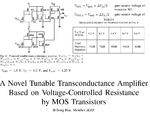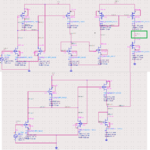shimaa.heydari
Junior Member level 1

hello all friends
i want to simulate linearity parameters such as THD, IM3, IP3 of an OTA with two output node (in other word this is fully differential).
my problem is in the output nodes.
1- I have two node in output. what I insert to this nodes?(R or C) with how much value?
2- what is correct to simulate? the linearity of voltage or current? in other word I must simulate THD of current or voltage?
i want to simulate linearity parameters such as THD, IM3, IP3 of an OTA with two output node (in other word this is fully differential).
my problem is in the output nodes.
1- I have two node in output. what I insert to this nodes?(R or C) with how much value?
2- what is correct to simulate? the linearity of voltage or current? in other word I must simulate THD of current or voltage?






